
The Canada Jay
Birds and climate change: can they stay or will they go?
Jump ahead thirty years—will you still find the sights and sounds of your favourite birds in national parks? By 2050, one in four birds in Parks Canada places may need to find new homes as a result of increased greenhouse gas emissions.
Climate change is affecting birds. Protected areas are helping birds survive. Watch this video to learn more:
Transcript
Parks Canada beaver logo
[A cartoon Canada Jay sits on a branch in a forest. The background fades into a map of Canada and the Canada Jay shrinks down to perch on the map. Other bird species appear on the map. A snapshot of a Canada Jay appears.]
[A vintage photo appears of a Parks Canada employee pointing to a bird in the distance while park visitors watch the bird through binoculars.]
[Text on screen] Parks Canada, circa 1970
[A person writes observations about a Canada Jay in a notebook. Included are details like the nest coordinates, the number of eggs, and a photo of the Jay.]
[The hand crosses out a “3” next to the “number of eggs” and replaces it with a “1”. The hand also adds a question mark next to a note about whether there’s a mate nearby.]
[A photo of a Canada Jay slowly zooms out to reveal many other birds surrounding it.]
[Narrator] This is a Canada Jay. It's one of around 450 bird species that call Canada home for at least part of the year. People have been studying Canada Jays for decades. Where they nest, what they eat, where they store their food. And one thing is becoming increasingly clear. Their behaviors are changing and the Canada Jays aren't alone.
[Text on Screen] Dr. Scott Parker, Ecosystem Scientist, Parks Canada
[Scott speaks into the camera while standing in front of blue water with trees along the shore.]
[Scott Parker] Birds live within specific climatic envelopes and as those envelopes change, they either have to adapt or move to find more suitable conditions.
[Two photos of Scott appear. In the photo on the left, Scott is in front of a body of freshwater, holding a monocular on a tripod over his shoulder. In the photo on the right, he is kneeling in a field measuring the size of a bird egg.]
[Narrator] This is Dr. Scott Parker. He's been studying climate change at Parks Canada for over 30 years.
[Scott speaks into the camera again.]
[Scott Parker] Seasonal behaviors that evolved and synchronized over thousands of years are changing as well.
[Images of various birds that live in Canada flash across the screen. A seagull nest with three eggs inside appears and a seagull walks into the shot and sits down on the eggs.]
[A V formation of birds flies across the sky. A Parks Canada employee uses binoculars to look at something in the distance. The employee next to her records data onto a sheet of paper on a clipboard.]
[Two caribou graze in a field in Gros Morne National Park. The cartoon map appears again with birds spread across the map. Other wildlife begin appearing on the map, including a caribou, a wolf, a frog, a monarch butterfly and a thistle.]
[Narrator] He's talking about behaviors like the time of year birds lay their eggs, which for many species is happening earlier. Migration times are shifting, and scientists are also noticing changes in birds’ ranges (or the places where they spend their time). And it's not just birds. Scientists are seeing similar trends in plenty of mammal plant, insect, fish, and amphibian populations, too.
[A cartoon Canada Jay holds a piece of food in its mouth while perched on a branch. The Jay hides the food behind a piece of bark. A magnified view of the food reveals that it’s a mix of berries, fungi, insects and seeds. A purple location marker appears above the food.]
[The scene changes to a winter forest covered in snow. Purple location markers drop in other locations throughout the forest. A thermometer on the left side of the scene indicates that temperatures are unstable.]
[Narrator] So why is this happening? In the case of the Canada Jay, changes in temperature are affecting their food. They spend the months leading up to winter's first freeze by storing fresh bits of berries, fungi, insects and seeds in caches around their territory. They rely on these frozen food caches to get them through the winter. But as temperatures in the fall become less stable, these food caches are becoming less reliable.
[A magnified view of the original food cache reveals that the food is beginning to rot as the changes in temperature happen. A Canada Jay’s nest containing three eggs appears. Eggs disappear one at a time until there is only one egg left in the nest. A photo of a Canada Jay appears. Then, footage of a traffic jam appears as an example of contributors to greenhouse gas emissions. The cartoon map of Canada with birds spread across it appears once again. Some of the birds begin to slowly fade away.]
[Narrator] The caches are freezing and thawing multiple times before the final deep freeze of winter, which causes the food to degrade and decompose. Lower quality food means the Jays are nesting later and having fewer and weaker nestlings. These changes for the Canada Jay may seem small now, but if greenhouse gas emissions continue at their current pace and temperatures continue to rise, this and many other species we know and love may move somewhere else, or they may not survive.
[The birds disappear from the map and national parks appear across Canada. Parks Canada staff observe birds in different places administered by Parks Canada.]
[Narrator] So how can National Parks in Canada help? In 2019, Parks Canada, the National Audubon Society, the Canadian Wildlife Service and Birds Canada got together to try and understand how bird species may be affected by climate change in national parks across the country, and perhaps even more importantly, how to adapt park management practices to make sure birds have the best possible chance of survival.
[Scott speaks into the camera while standing in front of the same blue water from previous scenes.]
[Scott Parker] Knowing birds’ current distribution, their current suitabilities, we were able to track where those would be found in the future, and thus where birds would move to stay within their climatic envelopes.
[A snapshot of the birds study appears on the screen with the title “Projected Effects of Climate Change on Birds in Parks Canada Protected Areas”. The words “Effects of Climate Change on Birds” are underlined in green. The slide changes to another snapshot of the study. The words “across the 49 parks”, “25% change” and “summer bird assemblage” are highlighted.]
[Narrator] The study found that by 2050, one in four birds in Parks Canada places may need to find new homes.
[Scott speaks into the camera.]
[Scott Parker] The Arctic sites were the ones most likely to experience colonization, and the Atlantic sites were the ones most likely to experience a high turnover and high potential extirpation.
[Images of various birds flash across the screen. The cartoon Canada Jay appears again, perched on a branch in a forest. The scene changes to a map of Canada with the Canada Jay in the top left corner. The Canada Jay’s current range is indicated in yellow. The range covers most of the southern provinces and also a large chunk of the Yukon and Northwest Territories.]
[The map changes to show a projected range shift if average temperatures increase +1.5°C. The Canada Jay’s range moves north, reaching the northern edges of the Yukon and Northwest Territories and the southern portions of Nunavut. Their range decreases in the southern provinces. The map continues to show changes until an average temperature increase of +3.0°C. In this scenario, the Canada Jay’s range is almost fully removed from the southern provinces and covers the southern half of Nunavut, nearly all of the Yukon and Northwest Territories, as well as the northern portions of Quebec and Newfoundland and Labrador.]
[Narrator] Depending on the species. Some may adapt to their new environment, and others may shift their range to colonize suitable habitat elsewhere. But even if a plant or animal has the ability to adapt or shift its range, these types of changes present a whole new suite of challenges. In the current warming scenario, the Canada Jay is projected to lose 71% of its southern range and gain only 22% new range in the north and at higher elevations.
[Images of birds that could become competition for the Canada Jay as their range shifts northward appear, including a Steller’s Jay and a Peregrine Falcon. The cartoon map of Canada with the national parks indicated reappears. The scene changes to a park with a lake in the forefront, surrounded by trees with mountains in the background. There is an island in the middle of the lake.]
[Narrator] Even if Canada Jays are able to shift their range, they’ll be entering unfamiliar habitat. They’ll face new competition for food and they could run into new predators they've never had to deal with before. With all these new stressors, protected places will be vital. Many contain areas where the effects of climate change are buffered by natural features. For example, mountainous parks may allow species to move upslope to cooler climatic zones.
[Yellow arrows point upward along the mountains to reinforce that species can move upslope in search of cooler temperatures. Red and blue arrows appear overtop of the lake, indicating the water can absorb heat and produce cooling breezes. The forest along the edge of the lake sets fire; the island, however, remains untouched.]
[Images of birds from across Canada flash across the screen. A construction site appears, as well as a forest that’s been clearcut.]
[Images of Parks Canada employees working together with partners to protect Parks Canada places flash across the screen].
[Narrator] Lakes can absorb heat and produce cooling breezes. Also, islands in Parks Canada, places are often beyond the reach of wildfires. Protected places can give species, like the Canada Jay, space to move, adapt, and find new homes away from the other stressors it faces outside of climate change. By protecting and managing Parks Canada places and working with partners to improve, connect and expand these natural spaces.
[Images of birds from across Canada flash across the screen. A drone shot of a sunset at Kouchibouguac National Park appears.]
[Text on screen] parks.canada.ca/climate-birds
[Narrator] Parks Canada is giving birds a better chance of survival in our changing climate. Find out more about the role of Parks Canada places in a changing climate and how you can help protect birds yourself.
Parks Canada teamed up with the National Audubon Society, the Canadian Wildlife Service, and Birds Canada. Together, we collaborated on a national study to understand the impacts of climate change on birds—and how we can protect birds and help them adapt.
Read a summary of the scientific study to learn what birds in your area are impacted by climate change.
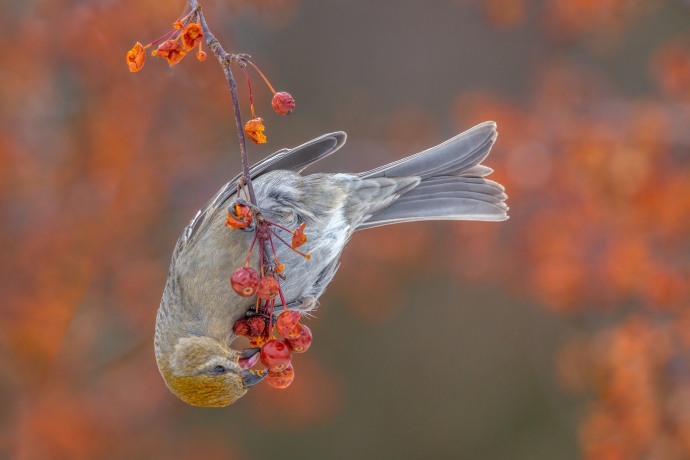
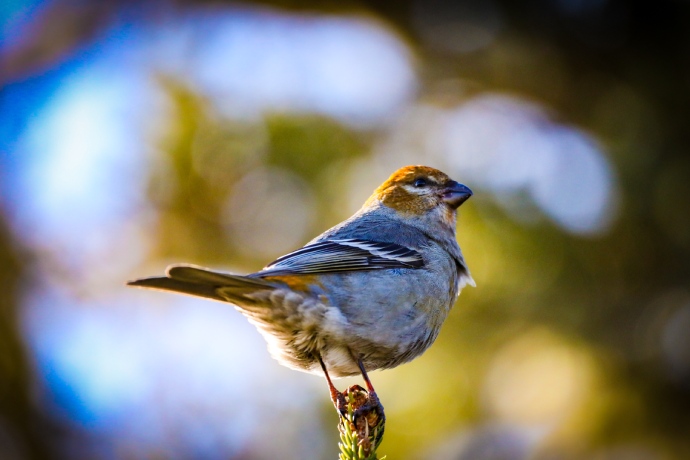
The messengers
Birds are among the most studied animals, and what they are telling us about climate change is alarming: birds and their habitat ranges are being impacted at local and global scales.
The Red-breasted Nuthatch.
As climate changes, habitat suitability for the different bird species living in a park will either improve, worsen, or remain stable. Birds may colonize new areas, or become extirpated – locally extinct – from places where they are found today. This will depend on the season, the location, and the bird’s ability to adapt to changing conditions.
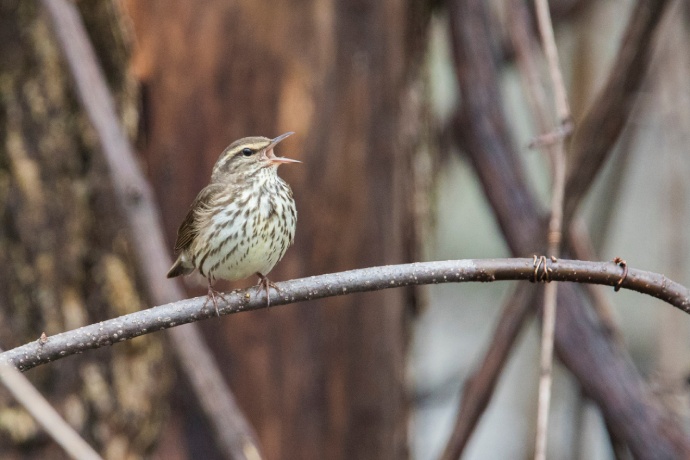
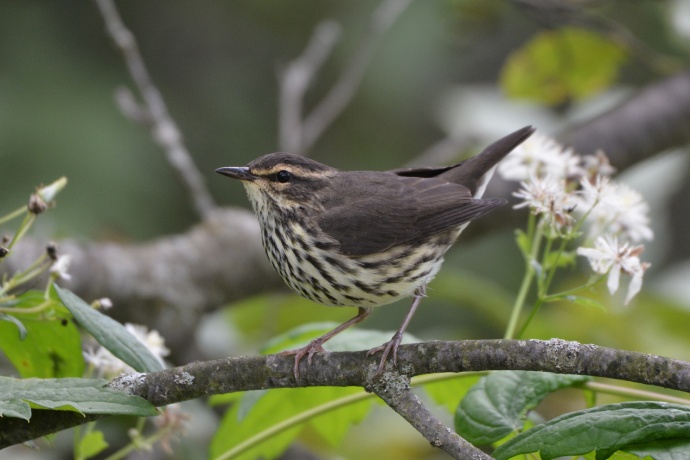
Watch the team at Torngat Mountains National Park as they study the way climate change is affecting the bird community in the low Arctic.
Field Notes Vlog: The Future of Birds in a Changing Climate
Text transcript
[Darroch] My name is Darroch Whitaker.
[Darroch] I'm an ecologist at Parks Canada.
[Darroch] Just getting ready to head out for a day of ecosystem monitoring at Torngat Mountains National Park.
[Darroch] Our pilot, Kyle, is getting the helicopter ready behind us.
[Darroch] We're leaving here from Torngat Mountains Base Camp and Research Station, which is our base of operations when we're doing fieldwork in the park.
[Darroch] A lot of the work we do in Torngat Mountains National Park has been focused on climate change and the effects of climate change on ecosystems and the environment in the Park.
[Darroch] One of the things we're seeing happen, is what we call shrubification.
[Darroch] It's happening all across the Canadian Arctic, but essentially tundra ecosystems converting to more of a shrub-type ecosystem.
[Darroch] On this hillside here in Nakvak Brook, you can see the green growing up the valley sides.
[Darroch] That's one of the consequences we're seeing, is that the greening of the tundra, the greening of the Arctic, is leading to an increase in expansion of vegetation up into the higher elevations.
[Darroch] I'm a bird biologist; that's my academic background.
[Darroch] So everywhere I go, I carry my binoculars with me.
[Darroch] And basically every bird I've seen, I write down a note on what species it is, how many are there, and whether there's any breeding evidence.
[Darroch] So at the same time, you're seeing shrubs change in this national park.
[Darroch] We're seeing the bird communities respond.
[Darroch] We have a lot of information to suggest that species should be shifting their ranges northward as global warming proceeds, and I've actually seen that with some of the data I've got here.
[Darroch] Some of the observations show that a whole group of boreal bird species are starting to colonize the Torngat Mountains.
[Darroch] This is exactly the kind of habitat that a lot of the boreal birds that are expanding in the national park are using...
[Darroch] ...they're moving into these areas, these thickets.
[Darroch] This is actually interesting because we have some historical photos of this location from a camp that was here in 1990.
[Darroch] These things are alders.
[Darroch] They're about two metres tall now.
[Darroch] These weren't here 30 years ago.
[Darroch] So Holly's measuring the height of the dwarf birch at one of our plots here,
[Darroch] we'll do five of these plots at each site.
[Holly] So, this one's actually, like, a 44. Yep... Catkin...and no browse.
[Darroch] Okay. Done here and we'll go on to the next one.
[Darroch] So we're here at Ramah Bay in Torngat Mountains National Park.
[Darroch] This is our last day of real fieldwork for 2021.
[Darroch] It's been a pretty successful year, although a little bit more damage than usual to some of our monitoring equipment.
[Darroch] We're just downloading a few last air temperature and soil temperature loggers and doing some repairs.
[Darroch] What's the story?
[Holly] So, it should be fine...we just need to put a new bracket on it.
[Darroch] Okay.
[Darroch] So we're all finished at Ramah Bay for this year.
[Darroch] We've got a slightly taller post installed, jerry-rigged with the parts that we had available to us today.
[Darroch] Fingers crossed for 2022 that the bears can't reach our air temperature logger on top and pull it down.
[Darroch] So it's August 13th, our last day in Torngat Mountain's Base Camp and Research Station.
[Darroch] We're just heading out to visit a research site from the doctoral research of Dr. Laura Siegwart Collier, who works for Parks Canada.
[Darroch] She's here behind me and we're going out to visit some "OTCs" or open-top chambers.
[Laura] So these simulate climate change and effects on tundra plants...
[Laura] and we're going to see how they're doing several years after they were put out here.
[Laura] So, what it does, what it's meant to do, is to block wind so that you have less heat loss for the ground vegetation.
[Laura] And it's been shown that these greenhouses increase temperature by about one degree Celsius compared to places where they don't have a greenhouse.
[Laura] The vegetation are growing taller, they're shrubbier, there's just generally more plant biomass inside these little greenhouses when compared to our outside plots.
Torngat Mountains National Park is cooperatively managed between Parks Canada and Inuit from Nunatsiavut and Nunavik. Together, they use Inuit Knowledge and science to track landscape changes and ease potential impacts. Watch the video in Inuktitut.
ᐱᓇᓱᕝᕕᒥ ᐊᓪᓚᓯᒪᔪᑦ: ᖁᐸᓄᐊᑦ ᓯᕗᓂᑦᓴᖓ ᓯᓚᒥ ᐊᓯᑦᔨᕙᓪᓕᐊᔪᒥ
Text transcript
[Darroch] ᑖᕈᒃ ᒍᐃᑦᑕᐃᑰᕗᖓ.
[Darroch] ᐆᒪᔪᓕᕆᔨᐅᕗᖓ ᑲᓇᑕᐅᑉ ᒥᕐᖑᐃᓯᕐᕕᖓᓂ.
[Darroch] ᐊᑐᐃᓐᓇᕈᕐᑎᐸᓪᓕᐊᕗᖓ ᐅᓪᓗᒥ ᐆᒪᓂᓕᓐᓂᒃ ᓇᔪᒐᕐᒥᓂ ᕿᒥᕐᕈᓚᖓᒐᒃᑭᑦ ᖃᐅᔨᓴᕐᓂᖅ ᑑᕐᖓᑦ ᖃᕐᖃᖏᑦᑕ ᑲᓇᑕᒥ ᒥᕐᖑᐃᓯᕐᕕᖓᓂ.
[Darroch] ᖁᓕᒥᒎᕐᑎᕗᑦ, ᑫᐅᓪ, ᖁᓕᒥᒎᒥᒃ ᐊᑐᐃᓐᓇᕈᕐᕆᔪᖅ ᑐᓄᑦᑎᓂ.
[Darroch] ᐊᐅᓪᓚᓯᕗᒍᑦ ᑕᒫᖕᖓᑦ ᑑᕐᖓᑦ ᖃᕐᖃᖏᑦᑕ ᑕᒻᒫᓯᒪᕕᖓᓂᑦ ᐊᒻᒪᓗ ᖃᐅᔨᓴᕐᕕᖓᓂᑦ, ᐊᐅᓚᑦᓯᕕᕗᑦ ᒥᕐᖑᐃᓯᕐᕕᒥ ᐱᓇᓱᓕᕋᑦᑕ.
[Darroch] ᐊᒥᓱᑦ ᐱᓇᓱᓲᕗᑦ ᑑᕐᖓᑦ ᖃᕐᖃᖏᓐᓂ ᑲᓇᑕᒥ ᒥᕐᖑᐃᓯᕐᕕᒃ ᑲᒪᒋᔭᐅᓯᒪᕗᖅ ᓯᓚᐅᑉ ᐊᓯᑦᔨᐸᓪᓕᐊᓂᖓᓂᒃ ᑲᒪᔪᓄᑦ ᐊᒻᒪᓗ ᓯᓚᐅᑉ ᐊᓯᑦᔨᐸᓪᓕᐊᓂᖓᓄᑦ ᓱᕐᕋᑕᐅᒪᔪᑦ ᐆᒪᔪᐃᑦ ᓇᔪᒐᖓᓂ ᐊᒻᒪᓗ ᐊᕙᑎ ᒥᕐᖑᐃᓯᕐᕕᒥ.
[Darroch] ᐃᓚᖏᑦ ᑕᑯᖃᑦᑕᓕᕐᑕᕗᑦ ᐱᕙᓪᐊᑎᓪᓗᒋᑦ, ᑕᐃᓲᕗᑦ ᑐᕐᕈᓯᕙᓪᓕᐊᓂᕐᒥᒃ.
[Darroch] ᑕᐃᒪᐃᑦᑐᖅ ᑲᓇᑕᐅᑉ ᑕᕐᕋᓕᒫᖓᓂ, ᑭᓯᐊᓂ ᐱᓗᐊᕐᑐᒥᒃ, ᓄᓇᐅᑉ ᐆᒪᔪᐃᑦ ᓇᔪᒐᖓᓂ ᐊᓯᑦᔨᐸᓪᓕᐊᓱᓂ ᑐᕐᕈᓂᕐᓴᒧᑦ ᐆᒪᔪᐃᑦ ᐃᓂᖓᓄᑦ.
[Darroch] ᒫᓂ ᖃᕐᖃᐅᑉ ᓴᓂᕌᓂ ᓇᒃᕙᒃ ᑰᖓᓂ, ᑕᑯᒍᓐᓇᑕᐃᑦ ᓄᓇᐅᔭᖅ ᐱᕈᕐᐸᓕᐊᔪᖅ ᓇᕐᓴᐅᑉ ᓴᓂᕋᖏᓐᓂ.
[Darroch] ᑖᓐᓇ ᓱᕐᕋᑕᐅᓂᖏᑦᑕ ᐃᓚᖓ ᑕᑯᓐᓇᑕᕗᑦ, ᓄᓇᐅᑉ ᑐᖑᔪᕐᓯᐸᓪᓕᐊᓂᖓ, ᐅᑭᐅᕐᑕᑑᑉ ᑐᖑᔪᕐᓯᐸᓪᓕᐊᓂᖓ, ᐱᕈᕐᑐᑖᕐᐸᓕᐊᑎᑦᓯᕗᖅ ᐳᕐᑐᓂᕐᓴᓂ ᐃᓂᓂ.
[Darroch] ᑎᒻᒥᐊᓂᒃ ᖃᐅᔨᓴᕐᑎᐅᕗᖓ, ᑕᒪᓐᓇ ᐃᓕᓐᓂᐊᓯᒪᓂᕋ.
[Darroch] ᓇᒧᖕᖓᓂᓕᒫᕋᓂ ᕿᕐᖑᑏᒃᑲ ᓇᑦᓴᓲᒃᑲ.
[Darroch] ᖁᐸᓄᐊᑦ ᑕᑯᓯᒪᔭᓕᒫᒃᑲ, ᐊᓪᓚᓲᒃᑲ ᖃᓄᐃᑦᑑᒪᖔᑕ, ᖃᑦᓯᐅᒪᖔᑕ, ᐊᒻᒪᓗ ᐅᓪᓗᖃᓕᓂᐅᒻᒪᖔᑕ.
[Darroch] ᑕᐃᑲᓂᑦᓴᐃᓇᖅ, ᓄᓇᒥᒃ ᑐᕐᕈᓯᕙᓪᓕᐊᔪᒥᑦ ᑕᑯᖃᑦᑕᖁᖓ ᑕᒃᑲᓂ ᑲᓇᑕᐅᑉ ᒥᕐᖑᐃᓯᕐᕕᖓᓂ.
[Darroch] ᑕᑯᖃᑦᑕᕐᑯᒍᑦ ᑎᒻᒥᐊᓂᒃ ᐊᐅᓚᑦᔭᐸᓪᓕᐊᔪᓂᒃ.
[Darroch] ᐊᒥᓱᓂᒃ ᑐᓴᕋᑦᓴᖃᕐᑐᒍᑦ ᖃᓄᕐᑑᕈᑎᓂᒃ ᑖᑦᑯᓄᖓ ᐆᒪᔪᓄᑦ ᐊᓯᑦᔩᒐᔭᕐᑐᓂᒃ ᖃᓂᖕᖏᓂᕐᒥᓂᒃ ᑕᕐᕋᒧᐊᕐᓗᑎᒃ ᐅᕐᖂᓯᕙᓪᓕᐊᓂᖅ ᓄᓇᕐᔪᐊᒥ ᐱᕙᓪᓕᐊᑎᓪᓗᒍ ᐊᒻᒪᓗ ᑕᑯᓯᒪᓕᕐᓱᖓ ᑖᑦᓱᒥᖓ ᑲᑎᕐᓱᐊᓂᒃ ᒫᓂ ᐱᓯᒪᔭᒃᑲᓂᒃ.
[Darroch] ᐃᓚᖏᑦ ᑕᑯᓐᓇᑕᐅᓯᒪᔪᑦ ᓄᐃᑦᓯᕗᑦ ᐃᒻᒥᒎᕐᑎᑐᑦ ᑕᕐᕋᒥ ᖁᐸᓄᐊᓂᒃ ᓄᓇᑖᕐᐸᓕᐊᔪᓂᒃ ᑑᕐᖓᑦ ᖃᕐᖃᖏᓐᓂ.
[Darroch] ᑕᒪᓐᓇᓯᐊᓪᓚᕆᑕᒐ ᑕᐃᒪᐃᑦᑐᖅ ᐃᓂ ᑕᕐᕋᒥᐅᑕᐃᑦ ᖁᐸᓄᐊᑦ ᐊᒥᓱᑦ ᐊᒥᓱᖕᖑᐸᓪᓕᐊᔪᑦ ᑲᓇᑕᒥ ᒥᖕᖑᐃᓯᕐᕕᖓᓂ ᐊᑐᕐᓕᕐᑐᑦ…
[Darroch] ... ᓅᑉᐸᓕᐊᔪᑦ ᑖᒃᑯᓄᖓ ᐃᓂᓄᑦ, ᑖᒃᑯᓄᖓ ᐅᕐᐱᓄᑦ.
[Darroch] ᑕᒪᓐᓇ ᖃᐅᔨᒍᒥᓇᑐᕋᑕᖅ ᐊᑦᔨᖑᐊᖃᕋᑦᑕ ᓄᑕᐅᖕᖏᑐᓂᒃ ᑕᒪᑦᓱᒥᖓ ᐃᓂᒥᒃ ᑕᒻᒫᓯᒪᕕᒻᒥᑦ ᑕᒫᓃᓚᐅᕐᓯᒪᔪᒥᒃ 1990-ᒥ.
[Darroch] ᐅᑯᐊ ᓇᐹᕐᑐᑎᑦ.
[Darroch] ᒪᕐᕉᓂᒃ ᒦᑖᓐᓂᒃ ᑕᑭᓂᖃᒐᓚᓕᕐᑐᑦ.
[Darroch] ᑖᒃᑯᐊ ᐱᑕᖃᓚᐅᕐᓯᒪᖕᖏᑐᑦ ᐅᑭᐅᑦ 30 ᓈᓕᕐᑐᑦ.
[Darroch] ᖄᓕ ᓱᕐᖄᑎᕆᔪᖅ ᐅᕐᐲᑦ ᑕᑭᓂᖓᓂᒃ ᐱᓇᓱᕝᕕᑕ ᐃᓚᖓᓂ,
[Darroch] ᒫᓂ, ᑕᓪᓕᒪᓂᒃ ᓱᕐᖄᑎᕆᓚᖓᕗᒍᒃ ᐅᑯᓇᓂ ᐃᓂᓂ ᐊᑐᓂ ᓴᓂᕋᖏᓐᓂ.
[Holly] ᑕᐃᒪ, ᐅᓇ, 44-ᓂᒃ ᑕᑭᓂᖃᓪᓚᕆᑦᑐᖅ. ᐋ… ᑳᑦᑭᓐ…ᐊᒻᒪᓗ ᓂᕆᔭᐅᓂᐅᒐᓂ.
[Darroch] ᖃᓄᐃᖕᖏᑐᖅ. ᒫᓂ ᐱᔭᕇᕐᑐᖓ ᑐᖓᓕᖓᓅᓚᖓᓯᕗᒍᒃ.
[Darroch] ᕌᒪᐅᑉ ᑲᖏᕐᓱᖓᓃᒃᑯᒍᒃ ᑑᕐᖓ ᖃᕐᖃᖏᑦᑕ ᑲᓇᑕᒥ ᒥᕐᖑᐃᓯᕐᕕᖓᓂ.
[Darroch] ᑖᓐᓇ ᐅᓪᓗᒃ ᐱᓇᓱᓐᓂᓚᕆᒋᓱᖓᓕᕐᑕᕗᒃ 2021-ᒥ.
[Darroch] ᑲᔪᓯᑦᓯᐊᑐᐹᓗᒃ ᐊᕐᕌᒍᖅ, ᓱᒃᑯᓯᒪᓂᕐᓴᒐᓚᐃᑦ ᖃᐅᔨᓴᕈᑎᕗᑦᑕ ᐃᓚᖏᑦ ᑭᓯᐊᓂ.
[Darroch] ᓄᐊᑦᓯᑐᐃᓐᓇᖁᒍᒃ ᓯᓚᐅᑉ ᐅᕐᖂᓂᖏᓐᓂᒃ ᑭᖑᓪᓕᐹᓂᒃ ᓄᓇᐅᓪᓗ ᐅᕐᖂᓂᖓᓂᒃ ᐊᓪᓚᒍᑎᓂᒃ ᐋᕐᕿᓱᐃᑦᓱᓄᓪᓗ ᓱᒃᑯᓯᒪᔪᓂᒃ.
[Darroch] ᓱᓇᐅᕚ?
[Holly] ᑕᒐ, ᖃᓄᐃᑦᑐᓴᐅᑦᔭᖏᓪᓚᖅ…ᓄᑖᒥᒃ ᕿᕋᑦᑕᕈᓯᑐᐃᓐᓇᕆᐊᓕᕗᒃ.
[Darroch] ᖃᓄᐃᖕᖏᑐᖅ.
[Darroch] ᑕᒐ ᐱᔭᕇᕐᖁᒍᑦ ᕌᒪᐅᑉ ᑲᖏᕐᓱᖓᓂ ᑕᒃᑲᓂ ᐅᑭᐅᒥ.
[Darroch] ᐃᓕᓯᕗᒍᑦ ᑕᑭᓂᕐᓴᒐᓛᐱᒻᒥᒃ ᓇᐸᔪᒥᒃ, ᓴᓇᒐᓚᑐᐃᓐᓇᓯᒪᔪᒥᒃ ᐃᓚᑦᓴᓂᒃ ᐊᑐᐃᓐᓇᕆᑲᐃᓐᓇᑕᑎᓐᓂᒃ ᐅᓪᓗᒥ.
[Darroch] 2022-ᒥ ᓇᓄᐃᑦ ᑎᑭᐅᑎᒍᓐᓇᖏᓚᐅᕐᐸᑕ ᓯᓚᐅᑉ ᐅᕐᑰᓂᖓᓂᒃ ᐊᓪᓚᒍᑎᒥᒃ ᖄᖓᓃᑦᑐᒥᒃ ᐅᕐᕈᑎᓗᒍᓗ.
[Darroch] ᑕᐃᒪ ᐅᓪᓗᒥ ᐊᐅᒡᒍᓯ 13-ᖑᕗᖅ, ᐅᓪᓗ ᑭᖑᓪᓕᐹᕗᑦ ᑑᕐᖓᑦ ᖃᕐᖃᖏᑦᑕ ᑕᒻᒫᓯᒪᕕᖓᓂ ᐊᒻᒪᓗ ᖃᐅᔨᓴᕐᕕᖓᓂ.
[Darroch] ᐳᓛᕆᐊᕐᐸᓕᐊᕗᒍᒃ ᖃᐅᔨᓴᕐᕕᐅᑉ ᐃᓂᖓᓂᒃ ᐋᓐᓂᐊᓯᐅᕐᑎᒪᕆᐅᑉ ᖃᐅᔨᓴᕐᕕᖓᓂᑦ ᐋᓐᓂᐊᓯᐅᕐᑎᒪᕆᐅᑉ ᓚᐅᕋ ᓰᒃᕗᑦ ᑳᓕᐅ, ᑲᓇᑕᒥ ᒥᕐᖑᐃᓯᕐᕕᒧᑦ ᐱᓇᓱᑦᑎᑦ.
[Darroch] ᑐᓄᒐᓃᑦᑐᖅ ᐊᒻᒪᓗ ᐳᓛᕆᐊᓯᑦᓱᓄᒃ OTC-ᓂᒃ ᐅᕝᕙᓘᓐᓃᑦ ᖁᓛᒍᑦ ᐊᒻᒪᔪᓂᒃ ᖃᕆᐊᕐᓂᒃ.
[Laura] ᑕᒐ ᑖᒃᑯᐊ ᐃᑦᔪᐊᓯᔪᑦ ᓯᓚᐅᑉ ᐊᓯᑦᔨᐸᓪᓕᐊᓂᖓᓂᒃ ᐊᒻᒪᓗ ᓱᕐᕋᐃᓂᖏᓐᓂᒃ ᓄᓇᒥ ᐱᕈᕐᑐᓂᒃ…
[Laura] ᐊᒻᒪᓗ ᖃᓄᐃᒻᒪᖔᑕ ᑕᑯᓂᐊᓯᔭᕗᒃ ᐅᑭᐅᓂᒃ ᐊᒥᓱᒐᓚᓐᓂᒃ ᐋᕐᑭᑕᐅᓯᒪᓕᕐᑎᓗᒋᑦ ᑕᒪᐅᖓ.
[Laura] ᑕᒐ, ᐃᒪᐃᓲᖑᕗᖅ, ᓱᒍᑎᒋᒋᐊᓕᖓ, ᐊᓄᕆᒥᒃ ᓄᕐᖃᑎᑦᓯᒋᐊᖃᕐᖁᖅ ᕿᐅᔭᓇᕐᓯᓗᐊᕐᓂᐊᖏᒻᒪᑦ ᓄᓇᒥ ᐱᕈᕐᑐᓄᑦ.
[Laura] ᐊᒻᒪᓗ ᑕᑯᑦᓴᐅᑎᑕᐅᓯᒪᕗᖅ ᑖᒃᑯᐊ ᐱᕈᕐᓰᕖᑦ ᓂᕈᒥᑦᓯᒋᐊᕆᓲᖑᓂᖏᓐᓂᒃ ᐊᑕᐅᓯᕐᒧᑦ ᓂᕈᒥᓐᓂᒧᑦ ᓯᐅᓪᓯᐊᔅᒧᑦ ᐃᑉᐱᒋᑦᓱᒋᑦ ᐃᓃᑦ ᐱᕈᕐᓰᕕᖃᖕᖏᑐᑦ.
[Laura] ᐱᕈᕐᑐᐃᑦ ᑕᑭᓕᕙᓪᓕᐊᔪᑦ, ᑐᕐᕈᓂᕐᓴᐅᓱᑎᒃ, ᐱᕈᕐᑐᖃᕐᓂᓴᐅᕗᖅ ᐃᓘᓐᓈᒍᑦ ᑖᒃᑯᐊ ᐱᕈᕐᓰᕖᑦ ᐃᓗᐊᓂ ᓯᓚᒥ ᐱᓇᓱᕝᕕᕗᑦ ᑕᑯᓐᓇᓱᒋᑦ.
Birds on the move
Every species of bird needs certain environmental conditions to thrive. These include things like temperature, precipitation, suitable habitat, and landscape connectivity. When conditions are no longer suitable, birds may be forced to relocate—or perish.
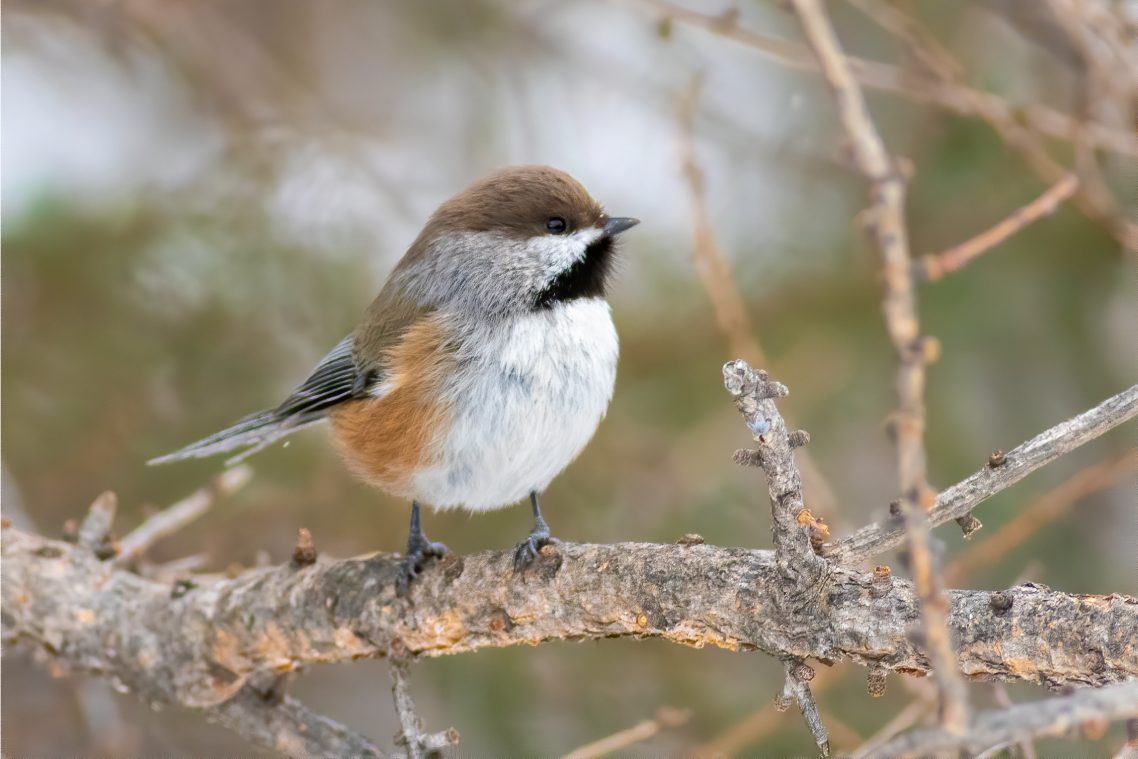
Keeping it fresh
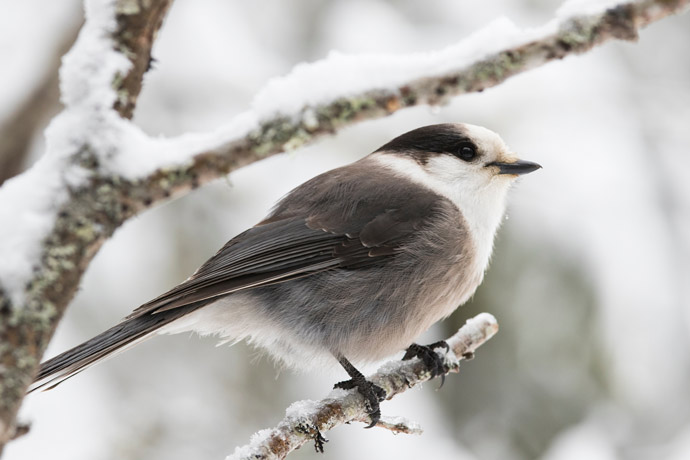
Meet the iconic Canada Jay. This songbird is one of the first species to nest in Canada's cold boreal forest each year. They start to build their nests and lay eggs as early as February and March.
Canada Jays survive by hiding small food caches in thousands of spots to get them through the winter and nesting season. They depend on cold winter temperatures to keep this food fresh and nutritious.
Warmer winters are causing these birds to suffer. Their precious food stores are decaying from regular freeze-thaw events. This is reducing the nutritional value of their food. It is also leading to failed nests and lower populations.
Watch the Canada Jay’s predicted range change as the climate warms from 1.5 to 3°C
Transcript
Parks Canada Beaver Logo
[Canada Jay chirping and forest noises]
A Canada Jay sits perched on a branch in front of a boreal forest, moving its head slightly.
[Text on screen: As climate changes, birds’ ranges are shifting.]
[Label: Canada Jay, Perisoreus canadensis]
A dark green map of Canada showing Parks Canada National Parks and Marine Conservation Areas appears, along with an illustration of a Canada Jay in the upper left corner.
The Canada Jay’s summertime range under current temperatures appears as a bright green area that spans across much of Canada. The bright green colour represents a stable range.
The temperature scenario changes to +1.5° C warming. The Canada Jay’s summertime range begins to shift; a small portion of the range in the south turns red, indicating a portion of that range is lost. The middle portion of the range remains bright green, or stable. A small section of blue appears in the north, indicating Canada Jays are predicted to gain range in the north.
The temperature scenario changes to +2° C warming. The Canada Jay’s predicted range shifts further north. The portion of their stable range shrinks, as it loses range in the south and gains range in the north.
The temperature scenario changes to +3° C warming. The Canada Jay’s predicted range shows dramatic losses in the south, very little stable range remaining, and a moderate amount of range gained in the north (though, less range than what was lost in the south).
The range change is repeated three times.
Text along the bottom indicates that the animation is “Based on Audubon visualization by Stamen Design”.
Government of Canada logo
Even minor changes in climate can have major consequences. The negative impacts of climate change will be much less if we can keep global warming to 1.5°C instead of 2°C.
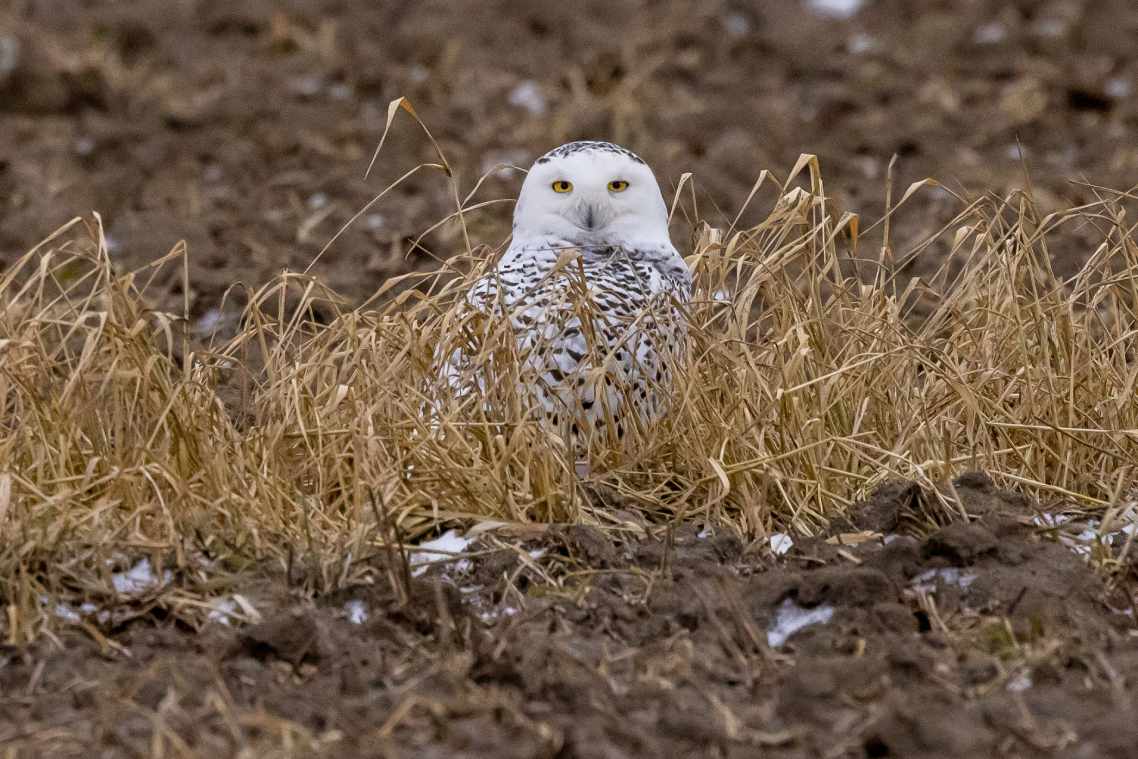
Protecting birds—together
Parks Canada, the National Audubon Society, Birds Canada, and the Canadian Wildlife Service are collaborating to better understand how climate change could affect bird species in protected and conserved areas.
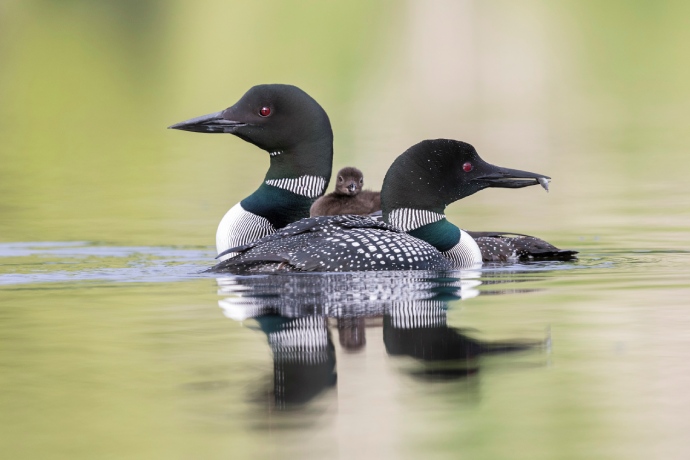
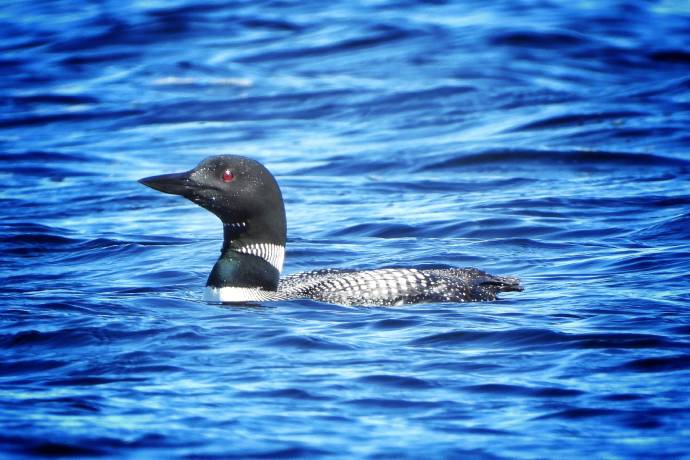
Their research findings predict that if climate change continues, bird communities across all places administered by Parks Canada will be different by 2050. Sites in the Atlantic, Quebec, and Great Lakes regions are expected to see the greatest changes in species composition.
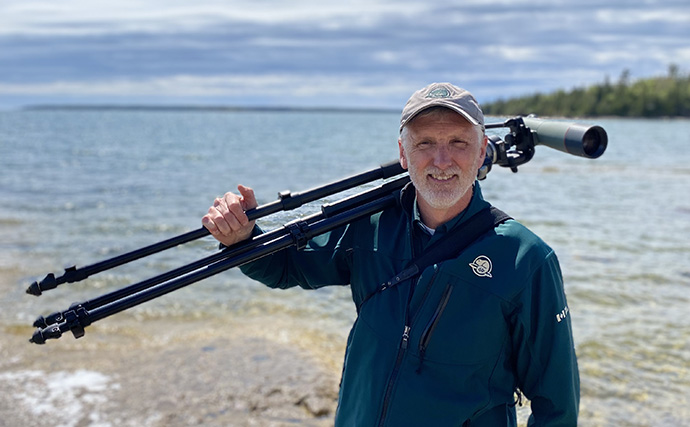
Finding a new home
As the climate continues to change, some birds may need to find new homes. In mountainous regions, that could mean moving up to higher elevations. In most other areas, it will mean a move northward.
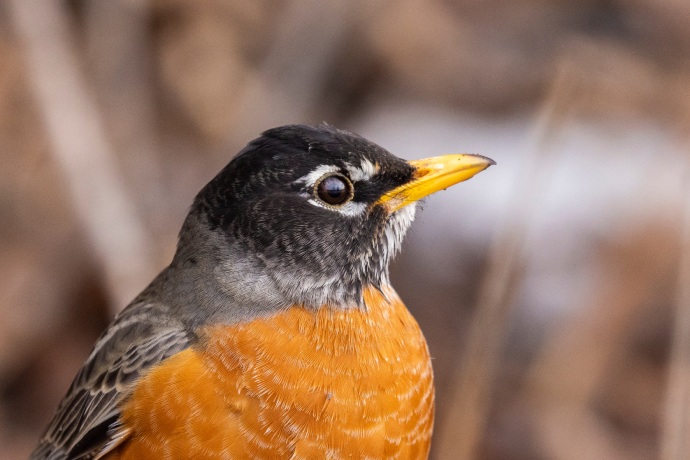
.jpg)
Some birds may not find enough or suitable habitat conditions, and therefore would not survive. This could lead to population declines and shrinking ranges.

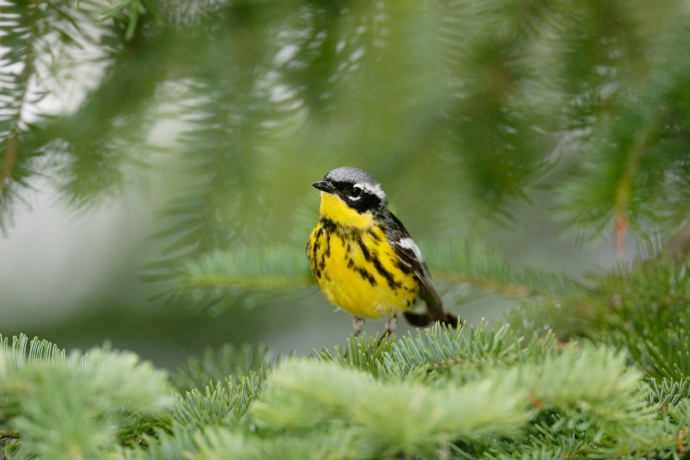
This search for new homes is a big challenge for birds. In their journey to migrate, birds face risks like predators, bad weather, lack of familiar foods and habitat, and exhaustion. New neighbours may not be welcoming.
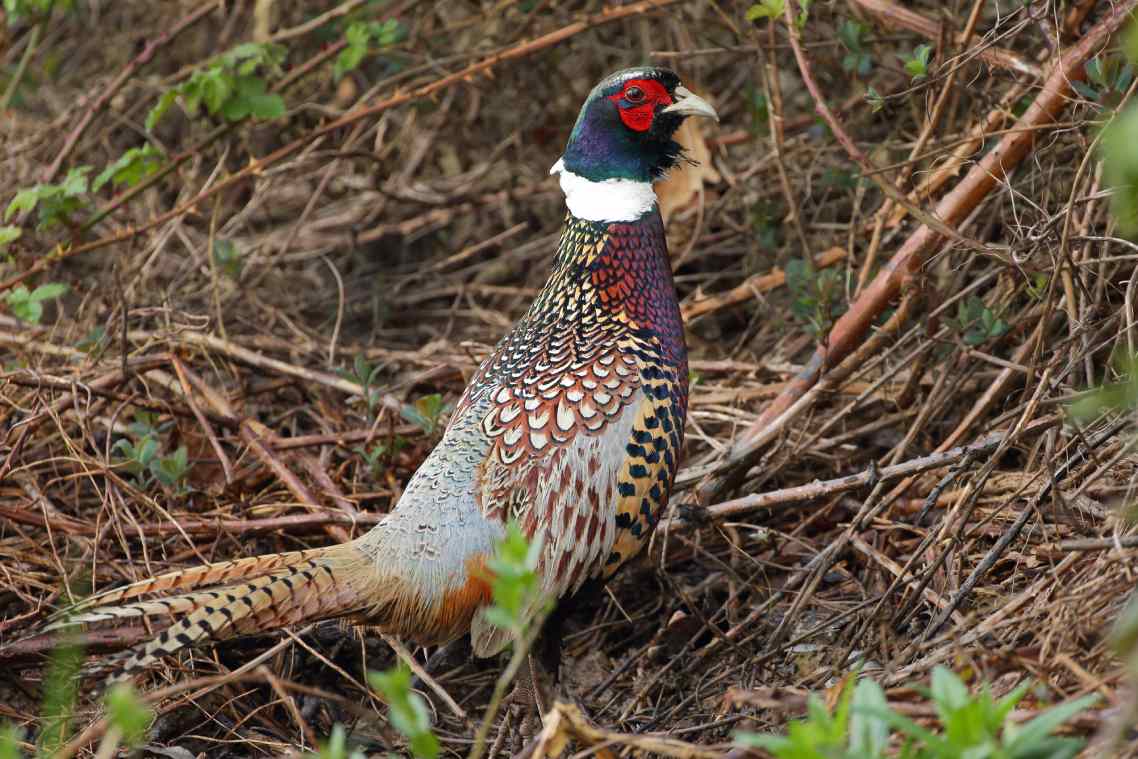
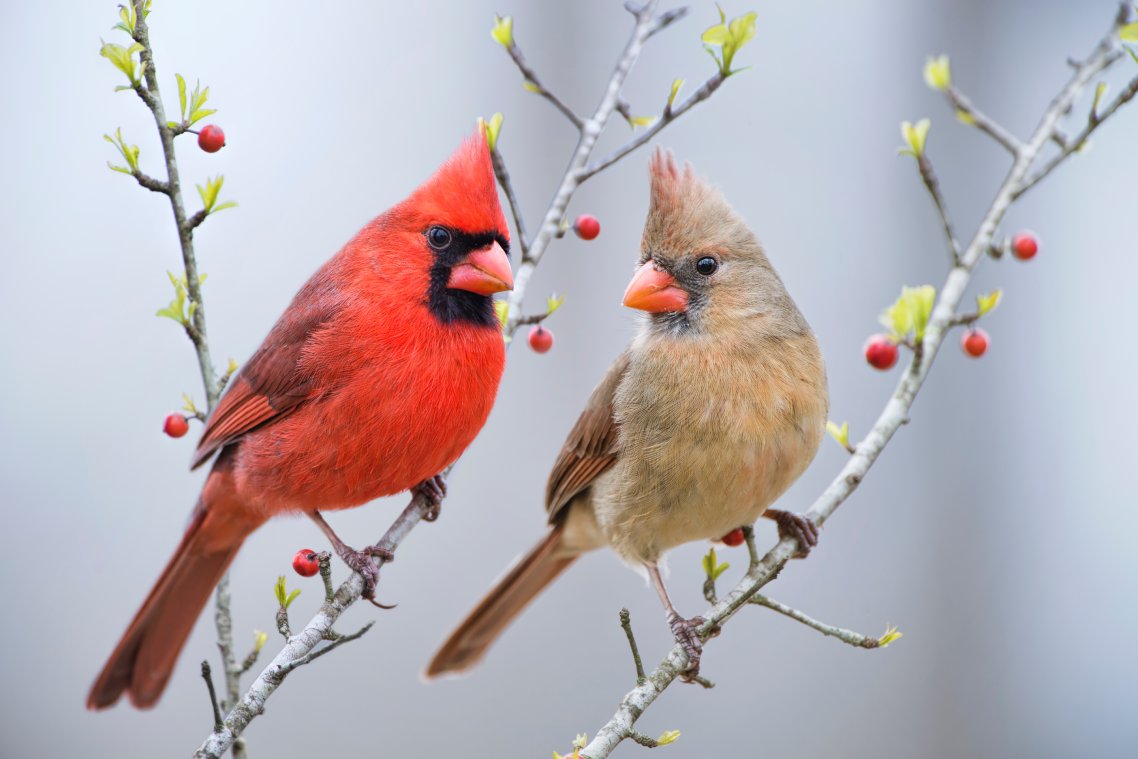
American Goldfinch.
Space for birds to breathe—to adapt
Protected and conserved areas give birds and other wildlife breathing space, allowing them to adapt and survive. These areas are still impacted by climate change. However, they may have fewer stressors, like habitat loss by human encroachment, resource extraction, and pollution.
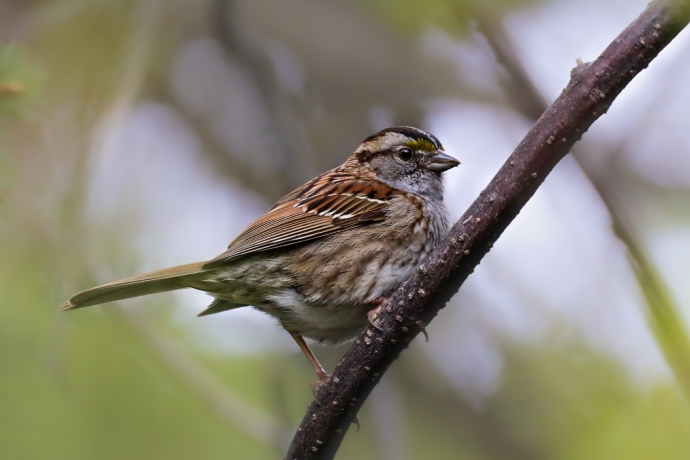
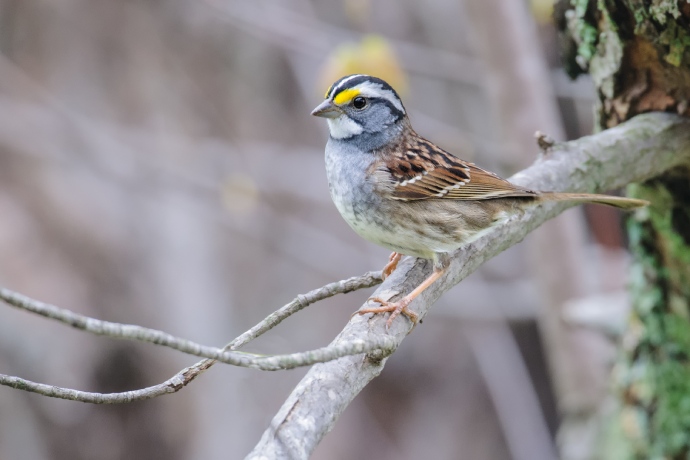
These areas are becoming “climate refuges”; places where the effects of climate change are less pronounced. In these places, mountains allow species to move upslope to cooler climates. Lakes can absorb heat and produce cooling breezes. Healthy ecosystems may be more resilient to stressors.
Vulnerable bird species, like the endangered Whooping Crane in Wood Buffalo National Park, will depend more on protected areas as their environment changes.
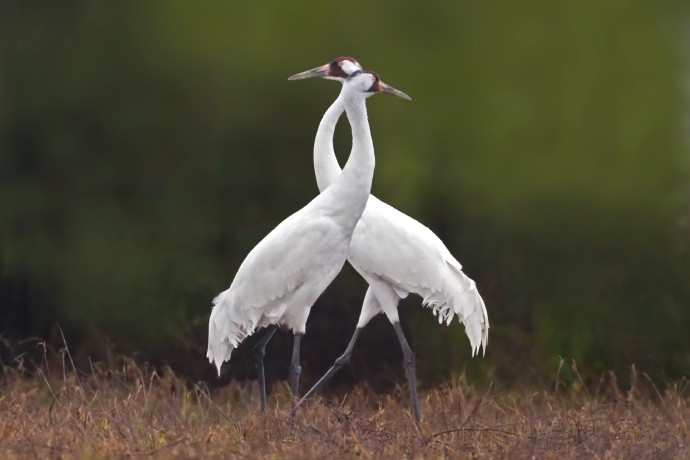
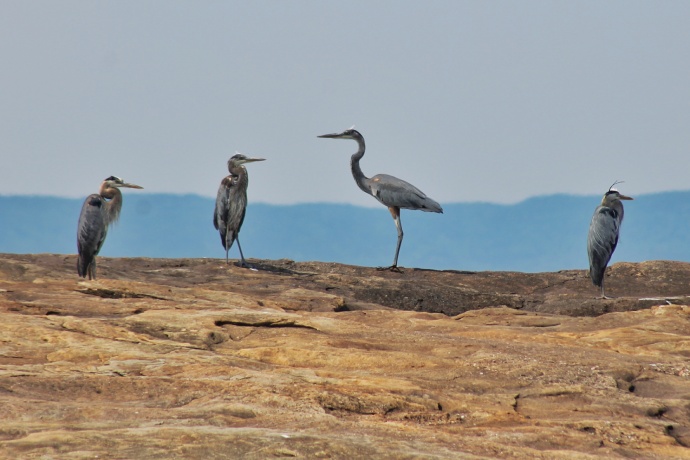
Parks Canada works with partners to conserve bird habitats beyond park boundaries. They create habitat “stepping stones” that improve connections between protected areas. These give birds and other wildlife a chance to move and adapt.
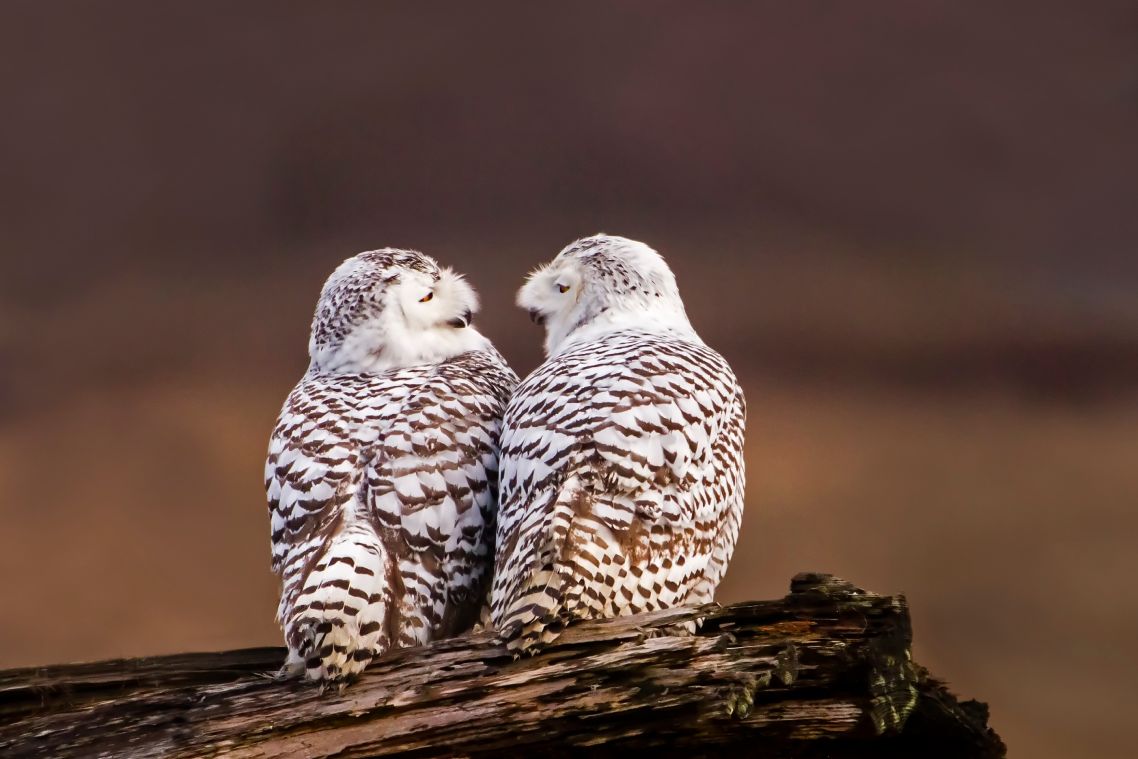
Your role in protecting birds
Fewer birds will need to find new homes if we can work together to reduce greenhouse gas emissions and slow global warming and its impacts. As well, by doing your part to reduce other human caused stresses on bird populations and the environment.
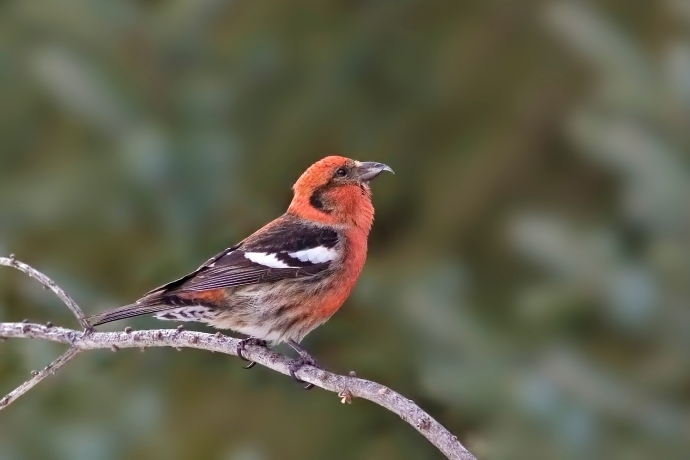
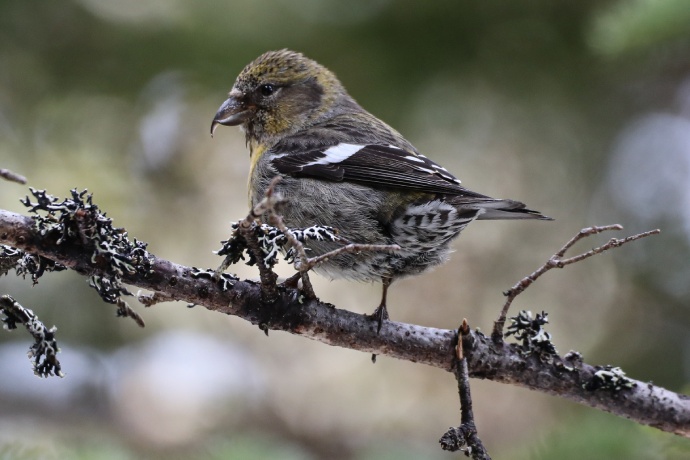
Birds can’t fight climate change, only we can. If we act now, we can reduce the impact of climate change and improve the chances for hundreds of bird species.
How you can help birds
- Do your part to reduce greenhouse gas emissions and lessen the effects of climate change
- Become a citizen scientist during the Christmas Bird Count or other programs offered by Birds Canada like the Breeding Bird Survey or FeederWatch
- Help scientists by recording your bird observations using the iNaturalist app or eBird
- Read the Guide to Helping Canada’s Birds and other conservation actions
- Use window treatments and turn off lights at night to reduce window strikes, especially during migration
- Plant native species in your garden
- Do not let your cat roam free, consider a cat leash or building a “catio”
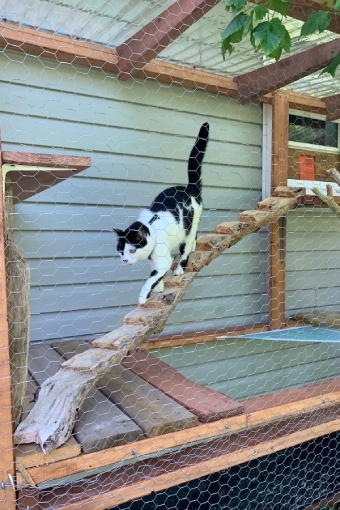
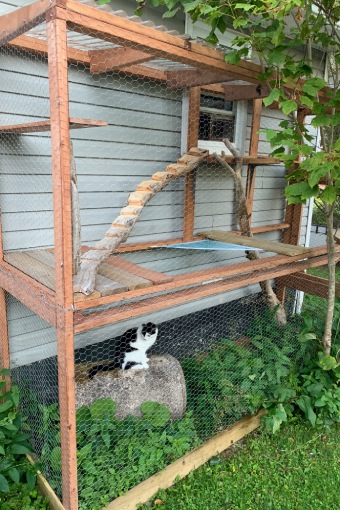
- Date modified :